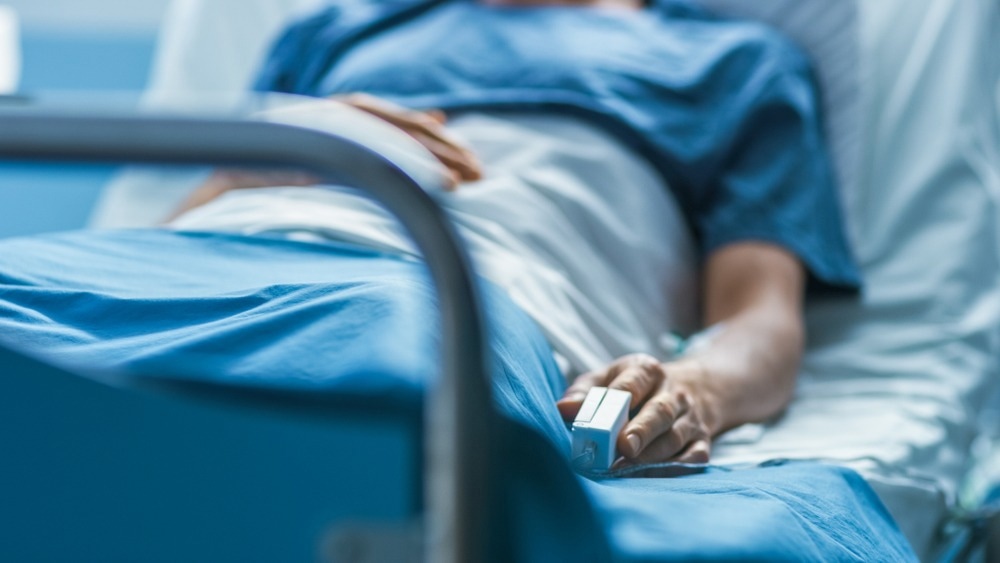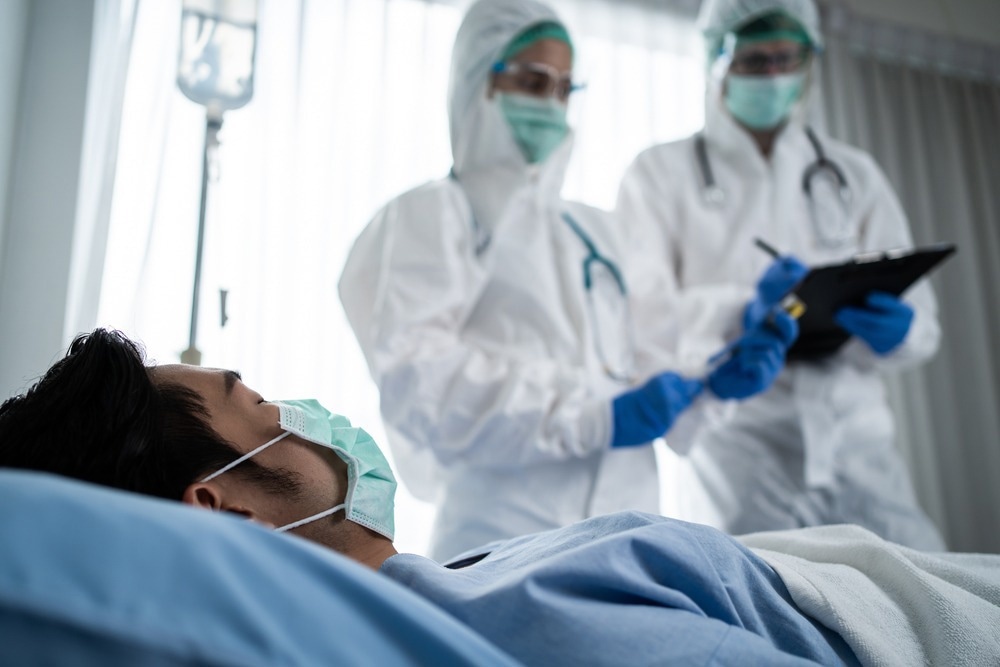What is prone positioning?
Awake prone positioning in patients with acute respiratory distress syndrome
Awake prone positioning in COVID-19 patients
How to perform awake prone positioning in COVID-19 patients
References
Further reading
Awake prone positioning is a well-established non-pharmacological intervention to improve lung oxygenation. During the ongoing coronavirus disease 2019 (COVID-19) pandemic, this process has received much attention for improving clinical outcomes in non-intubated COVID-19 patients with hypoxemic respiratory failure.

Image Credit: Gorodenkoff/Shutterstock.com
What is prone positioning?
Since the 1970s, prone positioning has widely been used in patients with acute respiratory distress syndrome undergoing invasive mechanical ventilation. In intubated patients, the process is used to prevent ventilator-induced lung injury.
The process works by reducing ventilation/perfusion mismatch (ventilator-induced lung injury), increasing lung oxygenation, homogenizing pleural pressure, and reducing shunting.
The basic working principle is changing the patient's position from supine to prone to increase oxygenation. Keeping the body in prone position helps maintain a more homogeneous lung ventilation from dorsal to ventral regions compared to the supine position.
In intubated patients with severe respiratory distress syndrome, early application of prone positioning has been found to reduce mortality without causing additional complications.
Awake prone positioning in patients with acute respiratory distress syndrome
Very little evidence is available regarding the effectiveness of prone positioning in awake patients with acute respiratory distress syndrome. Most studies have described the effectiveness of prone positioning in lung transplantation patients receiving non-invasive respiratory support to maintain spontaneous ventilation.
In spontaneously breathing patients with hypoxemic respiratory failure, awake prone positioning has been found to reduce hypoxemia without causing any detrimental side effects; however, the effect is short-term and abolished after returning to the supine position. Moreover, the process has been found to limit the requirement of invasive mechanical ventilation in these patients.
No significant benefit of awake prone positioning has been observed in non-invasively ventilated patients with severe acute respiratory distress syndrome. The majority of patients eventually required invasive mechanical ventilation. This finding indicates that awake prone positioning should not delay the essential medical intervention in patients with indications for invasive ventilation.
Awake prone positioning in COVID-19 patients
Awake prone positioning is considered a safe and effective strategy in COVID-19 patients. Many studies have been conducted throughout the pandemic to determine the pros and cons of this non-pharmacological practice, especially in COVID-19 patients with hypoxemic respiratory failure. Most of these studies indicate that prone positioning is effective when applied with oxygen supplementation or other oxygen therapies.
In COVID-19 patients with severe acute respiratory distress syndrome, prone positioning, and oxygen therapy have been found to improve lung oxygenation and mitigate invasive ventilation requirements. Early application of awake prone positioning in COVID-19 patients has improved pulmonary heterogeneity and reduced mortality.
In COVID-19 patients with hypoxia, prone positioning has significantly increased blood oxygen saturation. However, not all patients responded equally to prone positioning; some required invasive mechanical ventilation.
In spontaneously breathing COVID-19 patients, a significant improvement in partial pressure of oxygen has been observed in arterial blood following prone positioning.

Image Credit: Hananeko_Studio/Shutterstock.com
There is evidence contradicting the beneficial effects of prone positioning in COVID-19 patients with respiratory distress. Some clinical trials involving COVID-19 patients with hypoxemic respiratory failure could not find any clinical benefits of prone positioning.
Some scientists have challenged a generalized application of prone positioning in COVID-19 patients. In their view, COVID-19 patients with pneumonia exhibit a time-dependent variation in lung pathologies, which can interfere with the outcomes of prone positioning.
In the early phase of COVID-19 pneumonia, lung compliance (lung expandability) remains high. In this condition, prone positioning is not expected to provide any long-term benefits. With the progression of pneumonia, lung compliance reduces, creating a suitable condition for prone positioning. Thus, predicting the disease stage before prone positioning might be essential for the highest clinical benefits.
Gravitational forces generated during prone positioning help improve lung secretion drainage. The process may also increase coughing. These factors may lead to viral contamination of the surrounding environment.
How to perform awake prone positioning in COVID-19 patients
Despite substantial uncertainties regarding the effectiveness of awake prone positioning, this low-cost process is considered safe for COVID-19 patients who require oxygen supplementation. The process helps improve respiratory parameters and reduce invasive mechanical ventilation requirements.
A Guide to Prone Positioning for COVID-19 Patients
According to the recent guideline of the Intensive Care Society, awake prone positioning could be applied to conscious COVID-19 patients requiring oxygen supplementation for 30 minutes to 2 hours while rotating the patient from prone to right-sided to supine to left-sided positioning.
The process could be applied to COVID-19 patients with oxygen saturation below 94% and respiratory rate over 22/minute. The patients should be fully conscious, alert, and able to communicate and adjust their own position with minimal help. Constant monitoring by trained personnel is required, and the process should be terminated if the patient is uncomfortable or not showing any improvement.
Patients with airway or chest complications, unstable spine or pelvic bone, or recent abdominal surgery should not undergo prone positioning. Moreover, the process should not be applied to patients who require immediate intubation.
References
Last Updated: Apr 19, 2023